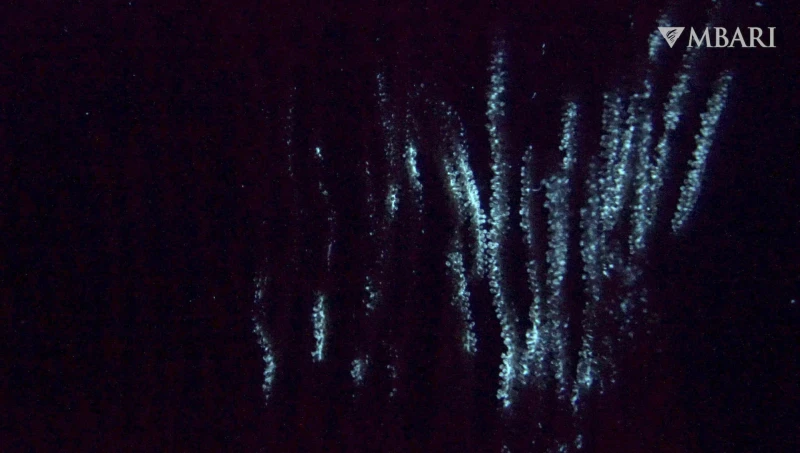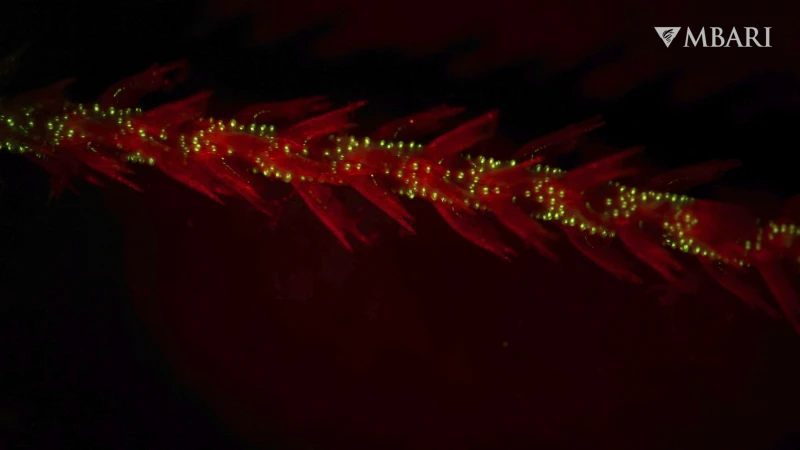In the vast expanse of the ocean, where sunlight struggles to penetrate the depths, a mesmerizing phenomenon unfolds: bioluminescence. While we often associate glowing creatures with fireflies on land, the true spectacle lies beneath the waves.
Recent research has unveiled a fascinating discovery: deep-sea corals dating back 540 million years may have been the pioneers of bioluminescence, shedding light on the origins of this captivating trait.
This essay delves into the intricate world of luminous marine life, exploring the significance of light signaling, the diverse purposes it serves, and the remarkable adaptations that have evolved over millennia.
The study published in the journal Proceedings of the Royal Society B sheds light on the evolutionary history of bioluminescence. Andrea Quattrini, a co-author of the study, emphasizes the importance of light signaling as one of the earliest forms of communication known to science.
In the depths of the ocean, where darkness reigns supreme, the ability to produce light confers a distinct advantage. It serves as a means of navigation, defense, predation, and reproduction, shaping the behavior and survival strategies of a myriad of marine organisms.
From the depths of the abyssal plains to the shallows of the continental shelf, a diverse array of creatures exhibit the mesmerizing glow of bioluminescence. Fish, squid, octopuses, jellyfish, and even sharks harness chemical reactions within their bodies to produce light.
Each species has evolved unique mechanisms for generating and controlling bioluminescence, tailored to their specific ecological roles. Some use light as a defensive mechanism, startling predators with sudden bursts of luminescence akin to a burglar alarm.
Others employ it as a predatory tactic, luring unsuspecting prey into their grasp, reminiscent of the mesmerizing lure of the anglerfish.
Among the enigmatic denizens of the deep sea are soft coral species that exhibit transient bioluminescence in response to stimuli. When disturbed or gently stroked, these corals emit a fleeting glow, revealing their hidden luminous potential.
Scientists, equipped with remote-controlled underwater rovers armed with paintbrushes, have unraveled the mysteries of these elusive creatures.
Steven Haddock, a marine biologist and co-author of the study, highlights the innovative methods employed to identify and study these luminous species, shedding light on their cryptic existence in the abyssal realms.
The luminescent world of deep-sea creatures captivates the imagination, offering a glimpse into the evolutionary marvels that have shaped life in the ocean’s depths.
From the ancient origins of bioluminescence in prehistoric corals to the intricate signaling mechanisms of modern marine organisms, the study of light in the deep sea unveils a tapestry of adaptation and diversity.
As we continue to explore the mysteries of the ocean, the glow of bioluminescent creatures serves as a beacon of wonder, illuminating the hidden realms of the underwater world.
In conclusion, the evolution of bioluminescence stands as a testament to the ingenuity of life in the ocean, showcasing the remarkable adaptations that have emerged over millions of years.
As we unravel the secrets of deep-sea creatures that glow in the dark, we are reminded of the boundless diversity and beauty that exist beneath the surface of the waves.
Soft coral, with its mesmerizing resemblance to waving reeds, skeletal fingers, or bamboo stalks, captivates the beholder with its vibrant hues of pink, orange, white, blue, and purple when illuminated by the researchers’ spotlight.
As elucidated by Danielle DeLeo, a distinguished study co-author and evolutionary marine biologist at the esteemed Smithsonian Institution, the luminosity of soft coral manifests in a variety of ways across different species.
While some species exhibit a dazzling radiance throughout their entire body, others only showcase luminescence in specific parts of their branches, creating a spectacle of natural artistry beneath the ocean’s surface.
The enigmatic allure of bioluminescent soft coral raises intriguing questions about the purpose of this radiant display. Scientists remain puzzled as to whether this luminous reaction is intended to attract or repel other organisms, or perhaps serves a dual function of both attraction and deterrence.
Nevertheless, the prevalence of bioluminescence among various coral species underscores its vital significance in the intricate ecosystem of the marine world, as suggested by DeLeo.
Delving deeper into the origins of this captivating phenomenon, researchers embarked on a comprehensive investigation utilizing genetic data from a diverse array of 185 luminous coral species.
Through the meticulous construction of an evolutionary tree, the scholarly endeavor sought to unravel the mysteries surrounding the ancient roots of bioluminescent soft coral.
The findings unveiled a profound revelation: the common ancestor of all present-day soft corals emerged a staggering 540 million years ago, bearing the remarkable likelihood of possessing the ability to emit light through bioluminescence.
The profound implications of this groundbreaking research extend far beyond the realms of marine biology, offering a glimpse into the evolutionary journey of soft coral and the enduring legacy of bioluminescence in the natural world.
The intricate interplay between light and life within the depths of the ocean serves as a testament to the awe-inspiring diversity and resilience of marine ecosystems, inviting us to marvel at the wonders of nature’s intricate tapestry.
In conclusion, the luminous allure of soft coral stands as a testament to the enduring mysteries of the natural world, inviting us to ponder the ancient origins and ecological significance of bioluminescence in marine ecosystems.
As we continue to unravel the enigmatic secrets of the ocean depths, the radiant beauty of soft coral serves as a poignant reminder of the profound interconnectedness of all living organisms on our planet.
Approximately 270 million years prior to the previously identified earliest instance of bioluminescence, which involved a luminous prehistoric shrimp, a new discovery has emerged, pushing back the origins of light production.

This revelation places the inception of bioluminescence in the vicinity of the Cambrian explosion, a pivotal era characterized by the rapid evolution and diversification of life on Earth.
The Cambrian explosion marked the emergence of numerous fundamental animal groups that persist in the present day. Stuart Sandin, a distinguished marine biologist affiliated with the Scripps Institution of Oceanography, who was not directly engaged in the research, expounded on the significance of evolutionary advantages.
He noted that ancestral organisms possessing distinctive and advantageous traits were more likely to thrive, ensuring the perpetuation and inheritance of these beneficial characteristics through subsequent generations.
Sandin’s observation underscores the crucial role that evolutionary adaptations played in shaping the trajectory of life on Earth, illuminating the intricate interplay between genetic inheritance, natural selection, and the persistence of species over vast spans of time.
